Different Types of Avocados Varieties & Species
With more than 100 varieties, Hass and Reed avocados are the most popular ones. Hass is most commonly used to prepare guacamole – one of the most loved avocado preparations.
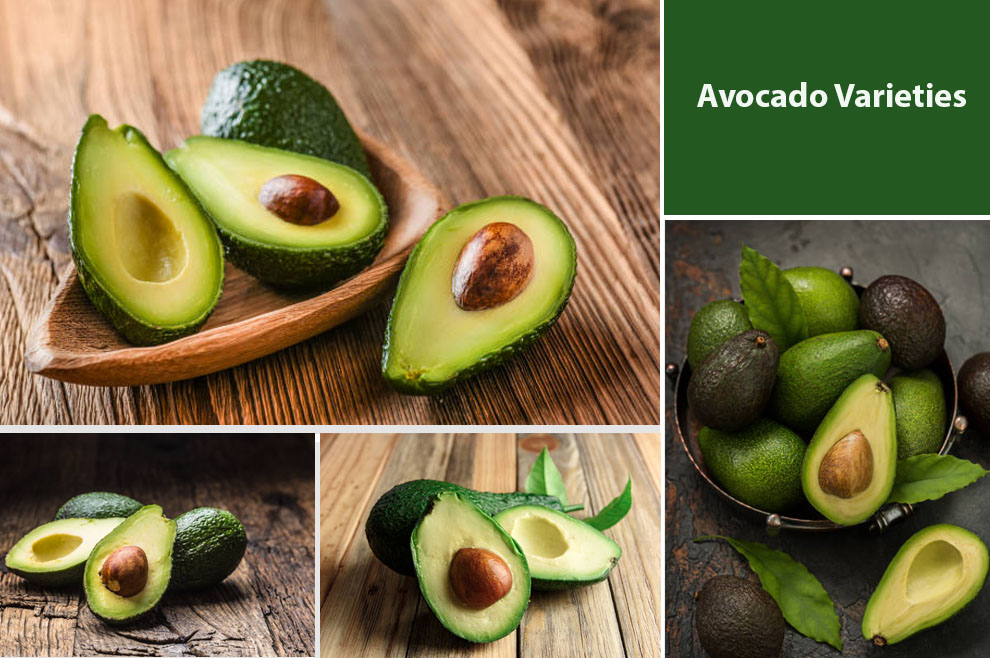
Avocados are delicious pear-shaped fruits. It is a large berry fruit with a large single seed, butterfly flesh, and rough green outer skin. They primarily grow on tropical evergreen trees and come in different textures, colors, sizes, and shapes.
You will find that most avocado varieties have a creamy and nutty flavor and a myriad of health benefits. Hence, it is a nutritious addition to the diet as it is the only fruit with unsaturated fats. Hence, it can be an excellent value addition to salads, sandwiches, or healthy desserts.
Native to South Central Mexico, an avocado tree can survive over four centuries. In America, ninety-five percent of Avocado production happens in California. Even though you may know of very few types, 100s of different kinds of avocados are cultivated globally.
Surprisingly, you may find most varieties similar to one another. But there is more to this versatile, nutritious fruit than meets the eye.
The hundred different varieties of avocado, all fall under three groups – Indian, Guatemalan, and Mexican. It implies that so many other different types of avocados exist than what you see at the grocery store. Fuerte and Hass are the two most famous varieties. Now, let us discuss some of the most popular species.
Type A and Type B Avocado Trees
Every avocado available will either be a Type A or Type B. For instance, Hass falls under the Type A variety, but Fuerte is the Type B avocado. We recommend planting the two avocado varieties close to each other to stimulate excellent fruit development.
Though recommended, it is not mandatory to have one of every variety. Most avocados are self-fruitful. Hence, they do not require a partner tree for cross-pollination. But, having the opposite Type A or B partner around helps yield a better and larger crop.
Studies show a fifty-percent surge in fruit development if provided a cross-pollinator tree. Some avocado species, like Pinkertons, are dependent on the partner trees so much that they perform poorer sans a cross-pollinator.
Pollination primarily happens via bees and not much by the wind. Hence, to grow avocados, you must plant two tree varieties in your yard and care for the avocado tree for best produce.
Difference Between Type A and B Avocados Trees
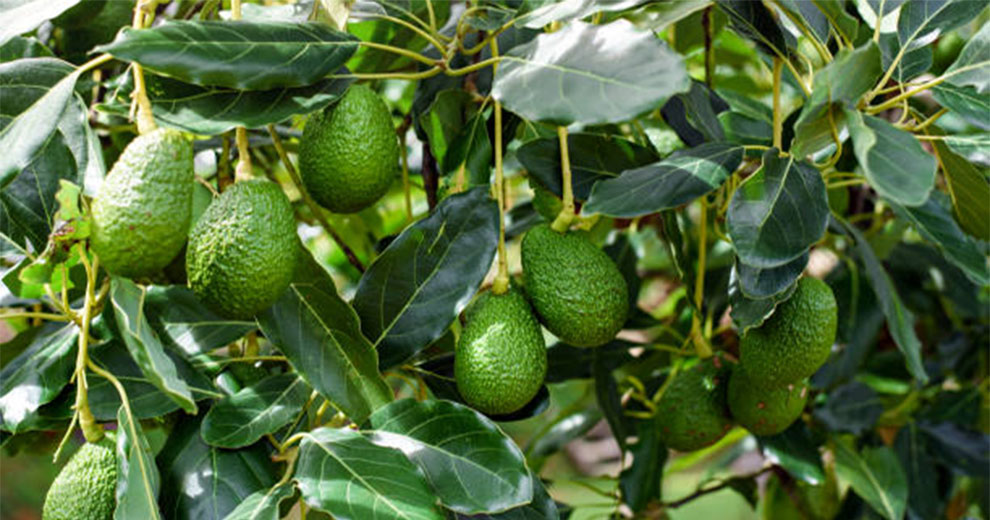
Avocados have unique flowers. Instead of having separate male and female flowers like most plants or the availability of the male and female anatomy to interact within the same blossoms like others, avocados change sexes.
The avocado varieties blossom with their female reproductive organs in the morning. On the contrary, Type B flowers open in the morning while in their male phase. Then each pulls a switcheroo, and the opposite sex flowers open the next day in the afternoon.
Since avocados take turns exposing their male and female parts, it is challenging for a single tree to pollinate and yield fruit. Of course, it happens. However, it is to a relatively lesser extent when the opposite Type B or Type A is in the surroundings.
It is why you will find two different types of avocados grown in the vicinity to elevate cross-pollination. One of the best hybrids comes from Fuerte and Hass.
There are multiple other commonalities between the varieties from the Type A or B group beyond their blooming pattern.
Most A varieties are descendants of Hass or Hass-like and have nutty flesh and thick skin, rich in oil content. They are also exceptionally creamy. On the contrary, the Type B avocado varieties are green skins. They are fragile, thin-skilled, and have more watery flesh with lesser oil content.
Hence, the Type B species are less famous in the commercial industry as they damage easily in processing and shipping. Some even find the Type B avocados’ flavor inferior to the Type A avocados.
Different Types Of Avocados
Some Other Types
- Lamb Hass
- Shephard
- Wurtz
- Gem
- Carmen
- Sharwil
- Ettinger
- Edranol
- Choquette
- Lula
- Brogden
- Cleopatra
- Monroe
- Pryor
Related: Best fertilizers for Avocado trees|How to grow avocados from seeds?
A Look At Different Kinds of Avocados In Detail
Here is a list of some of the popular varieties:
1. Reed
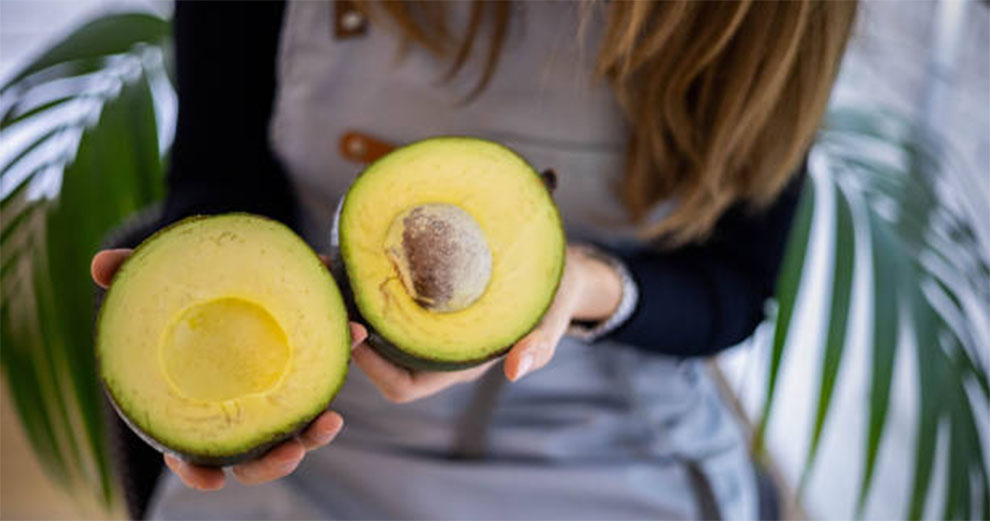
It is a Type A avocado and a late-season variety with a spherical fruit and an upright growth habit. Native to California, Reeds are predominantly resilient and rugged. It grabs attention for being one of the biggest known and heaviest avocados that grow up to two pounds.
You can grow it in various environments, but it thrives in USDA hardiness zones 10 through 11. You must pick it up late in the season to achieve delicious variety. Hence, it is primarily available in the summer months.
It has a subtle, light flavor and is as big as a softball. It is delectable and less oily than others. When the Reed ripens, its skin remains the same green color, unlike the other avocado varieties, and has one of the richest, boldest flavors.
You can grow it as an excellent compact tree in tighter spaces with good pruning. But it is a large tree that can reach up to thirty-seven feet upon maturity. It can produce well, sans a partner pollinator, and is frost sensitive below 32 degrees Fahrenheit. But it is more heat-tolerant than Hass.
2. Hass
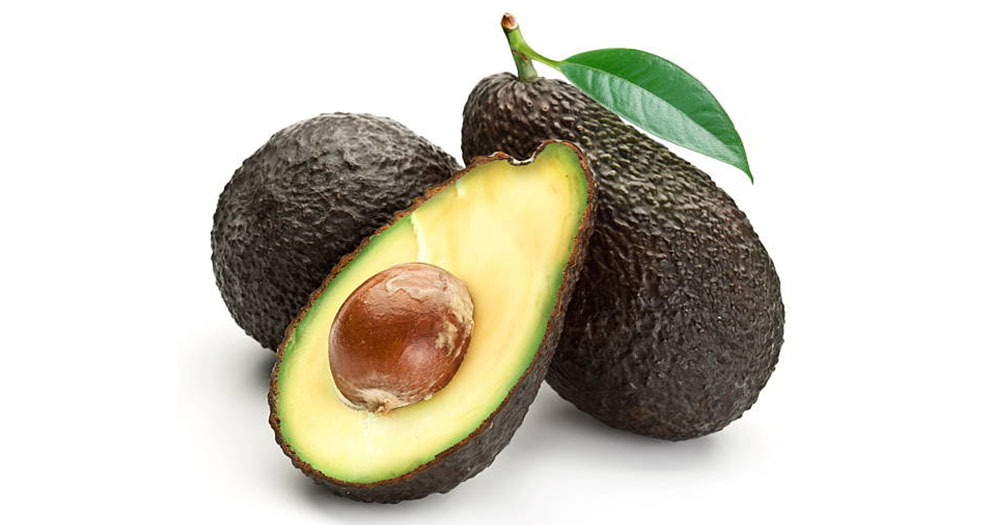
It is the most reliable and marketable producer in most areas and is the best type of avocado, available all twelve months. The avocado is Type A and eaten for its nutty, buttery flavor and spherical shape.
As it ripens, its skin forms a bold green to a dark purplish-black color. Overall, it is an attractive variety and is the most famous species globally. Reports suggest that Hass avocados account for almost eight percent of all avocados eaten worldwide.
You can find multiple cultivators in Hass, but you can pinpoint them for their oval shape, pebbly skin, creamy high-fat flesh, and tiny seed. It is also the best-tasting avocado and is ideal for home growers. You can grow them both indoors and outdoors.
They are an excellent component for tacos, guacamole, sandwiches, and other dishes because of their texture and color.
3. Fuerte
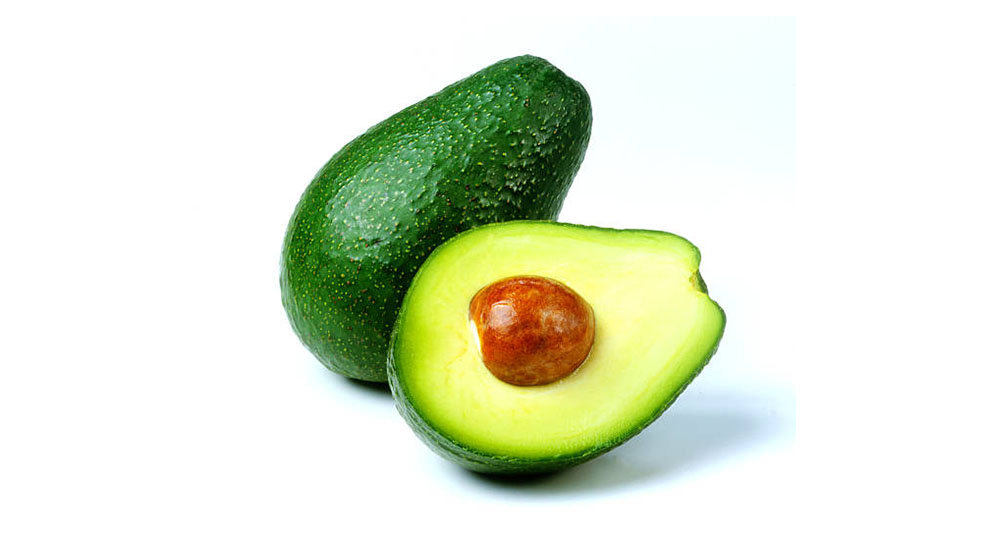
Of late, Hass displaced Fuerte in popularity because of its wider accessibility. Regardless, Fuerte avocado once was and still is considered by many to be the golden standard for avocado varieties. It is often grown as a cross-pollinator for Hass.
They are medium to large avocados with an elongated pear shape and smoother skin with an inner flesh that is creamy yellow, thick, and slightly oily. It is a Type B avocado and grows in hardiness zones nine through eleven.
The tree is large and grows up thirty-five feet with a wide sprawling canopy. Fuerte is cold and hardy down to twenty-eight degrees Fahrenheit, but you must shield it against the coastal wind to get the most delicious fruit.
Moreover, it is relatively less heat-tolerant than the other different types of avocados. It delivers a long, oval green-ripening fruit with leathery skin, easy to peel. Its oil component is not as much as the Type A varieties, but its flavor and creaminess are unprecedented.
It is an excellent addition to several avocado-featuring dishes like BLTs, avocado toast, tacos, and the like. You can also eat it raw as a healthy snack or with some seasoning. Fuerte blooms from May to November and ripens between November and April.
4. Pinkerton
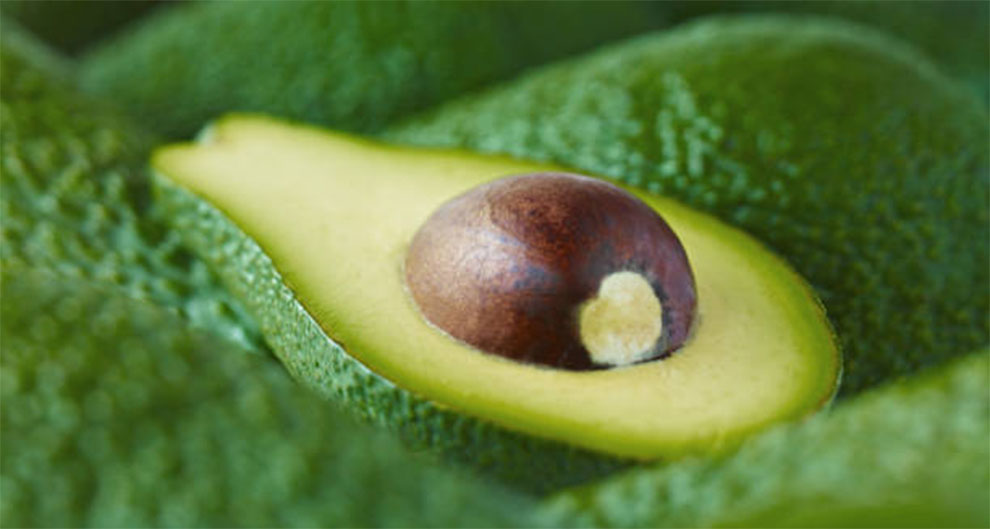
It is a Type A avocado and is an excellent fruit for growing and eating, making it one of the most popular picks on this list. Often they grow to be some of the largest avocados available.
Known for its slender, oblong, pear-shaped appearance like Fuerte, Pinkerton has an easy-to-peel, pebbly skin of medium thickness, which retains its green color even as it ripens. Pinkertons come in different sizes, from eight to eighteen ounces, with a nutty, classic rich avocado flavor and a very tiny pit.
Hence, you will have more avocado flesh to relish. These avocado species got their name from the Californian Ranch, where they were cultivated for the first time in 1970. It is a hardy plant up to 30 degrees Fahrenheit and thrives in USDA hardiness zones nine through eleven.
This variety is regarded as relatively more manageable than most others. Hence, they are a favorite amongst home growers. They primarily depend on Type B pollinator partner trees to yield a good fruit set.
5. Zutano
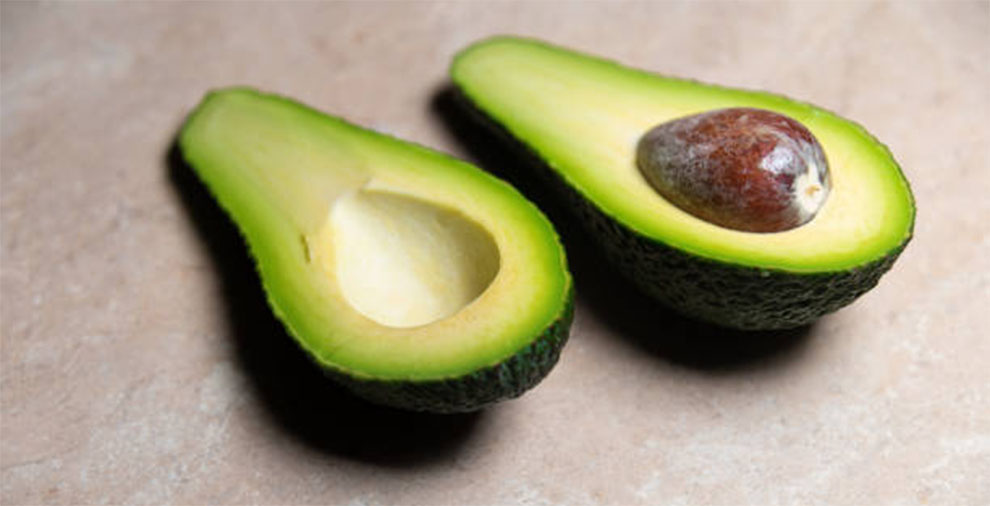
It is a type B avocado enveloped in yellow-green, light skin. Zutano has a mild flavor that is unlike most other buttery avocado varieties. Its fruit usually grows to around 0.5 to 1 pound. It looks much like Fuerto, especially in its texture, glossy skin, and shape.
Belonging to California, Zutano stands out as farmers believe that Hass avocado trees near the Zutano ones grow significantly larger avocados than the ones planted away. It has a creamy flesh and a higher water content, which makes it milder and adds to its citrusy flavor.
The fruit remains green across the ripening process. Such avocados can give a natural nutritional boost sans flavoring to your favorite dishes. You can add them to your mousse, brownies, smoothies, and similar dishes.
6. Bacon
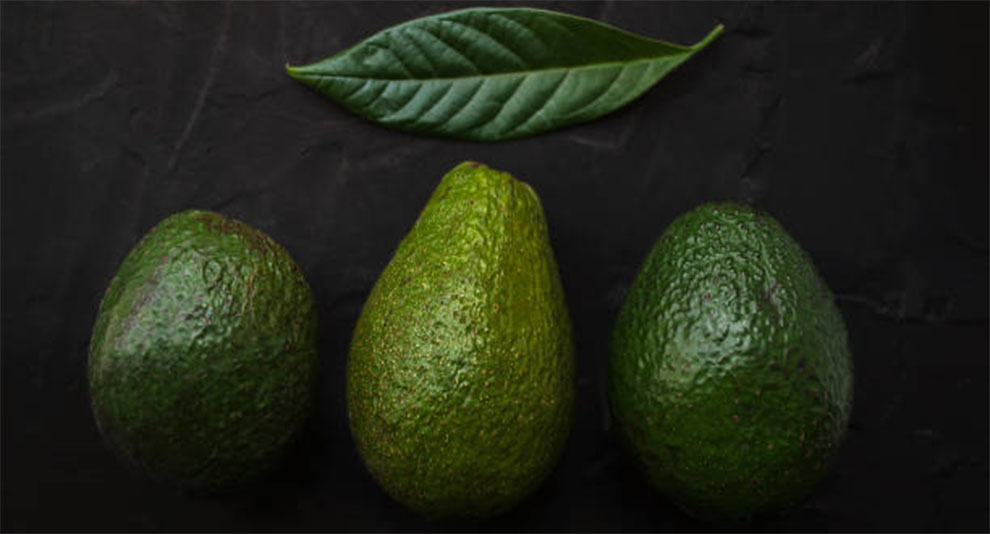
Bacon is a type B avocado and has enjoyed booming popularity over the years. It is an extremely hardy plant down to 24-26 degrees Fahrenheit, making it one of the best types of avocados for colder climates.
The plant thrives in USDA hardiness zones 8B through 11. It is a green and smooth avocado with a sweet-tasting note in its flesh, which is mild, and often considered bland compared to Fuerte and Hass.
In 1954, the Bacon avocado germinated as a hybrid of two Mexican avocados, christened after its original grower, James Bacon. It has a medium and upright growing habit and reaches an average of twenty feet in height upon maturity, somewhat smaller than most other avocados.
Its growing season is between November and March. So, it is an excellent addition if you wish to enjoy year-round avocado harvesting. It can be a valuable addition to dishes, courtesy of its assertive flavor. You can use it as a thickening agent in keto-friendly recipes like avocado mayo, avocado chocolate mousse, and the like.
7. Gwen
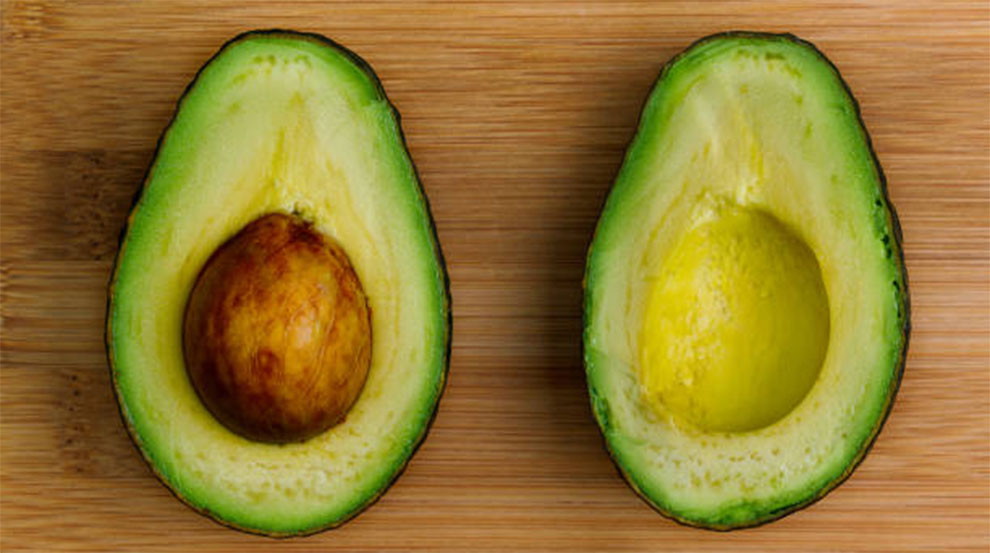
It is a Type A variety with an oval shape and dark-green color. The avocado has a creamy flesh that is larger and more flavorful. It looks similar in texture to the Hass avocado. Developed in California, the Gwen avocado has a pebbly, thick skin, easy to peel.
The fruit weighs approximately 15 ounces and has a small to mid-sized seed. They grow up to 15 feet and are one of the smaller varieties that bloom in Spring and ripen from May through September.
8. Mexicola
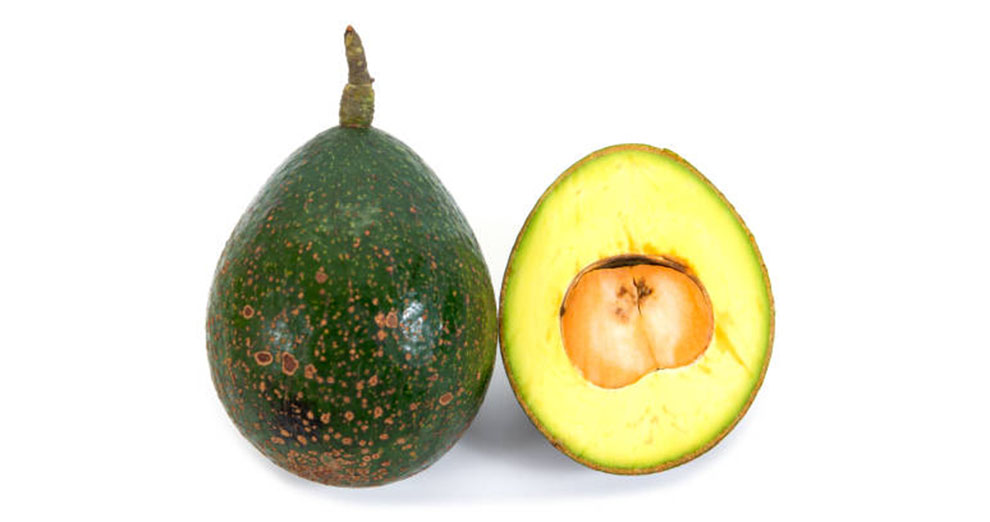
It is a Type A avocado species hardy up to 30 degrees Fahrenheit. The avocado grows best between USDA hardiness zones 8b through 11 and is black-colored with a pear shape. Since it originated in Mexico, it is called the Mexicola.
The avocado has shiny, smooth skin and is smaller than normal-sized avocados. However, it has a thin skin that makes it difficult to peel. Its seed is huge, and they are a flavorful variety. Mexicola has an edible skin, and people claim it has an anise-like flavor.
9. Holiday
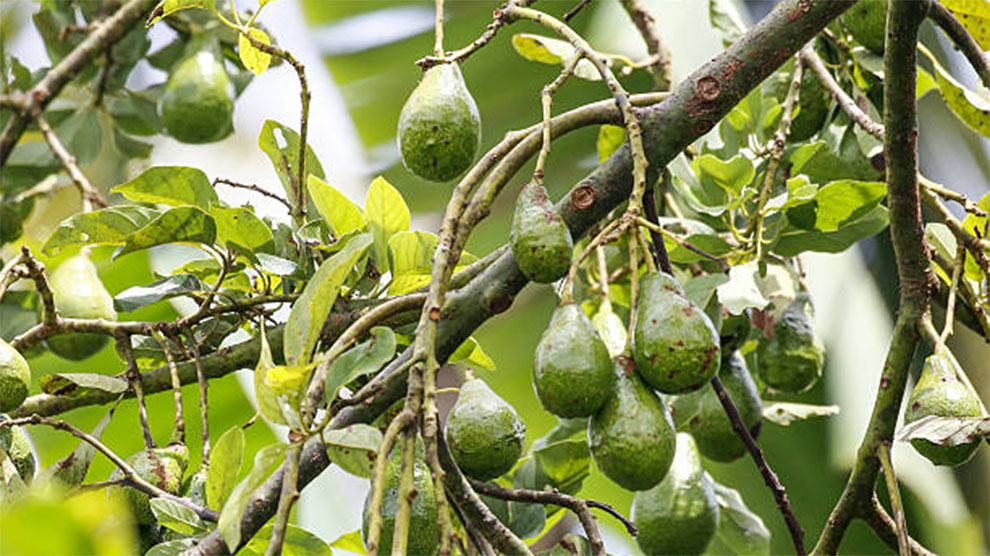
It is a Type A avocado and grows in USDA hardiness zones nine through 11. It is a semi-dwarf avocado that usually grows between 12 to 15 feet and has a distinct weeping canopy.
The plant is sensitive below 30 degrees Fahrenheit and is known for its oval fruit, which stays green as it ripens. It has a good flavor and a medium oil content. Holiday blooms in Spring and matures from September through January.
Since it ripens during the Holiday season, it is called the Holiday avocado. It has a small size and excellent fruit production. Hence, it is a top pick for container gardening and small backyards.
10. Stewart
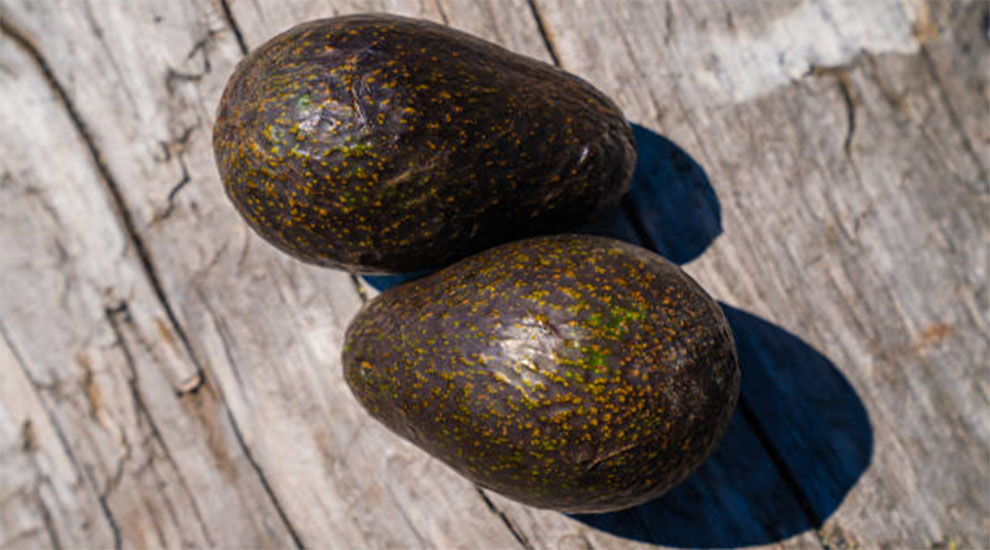
It is a Type A avocado. They look like the Mexicola avocados with thick dark skin and are pear-shaped like the Hass varieties. But, unlike Hass avocados, Stewart has smoother skin. These avocado varieties are small and run between six to ten ounces.
They have tasty flesh, and its flesh is about twenty percent oil, which makes it pretty oily for raw consumption. However, it is the best pick for avocado oil production. You can find the Stewart avocados from fall through winter and is more cold-hardy than other varieties.
11. Maluma
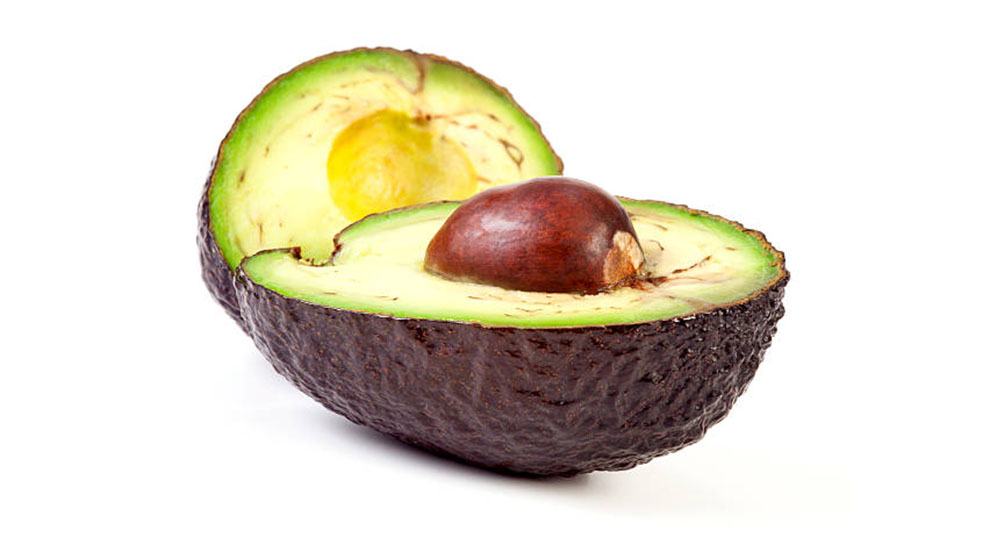
It is a Type A, dark purple avocado that originated in South Africa in the 1990s. Hence, it is a newer but slow-growing specie. However, Maluma trees yield several fruits. It is a large avocado with rough skin. Its seeds are also bigger than the other avocados, weighing about 14 inches.
A few other avocado species that are not universally popular include:
- Lamb Hass
- Shephard
- Wurtz
- Gem
- Carmen
- Sharwil
- Ettinger
- Edranol
- Choquette
- Lula
- Brogden
- Cleopatra
- Monroe
- Pryor
Health Benefits of Avocado & Nutritional Value
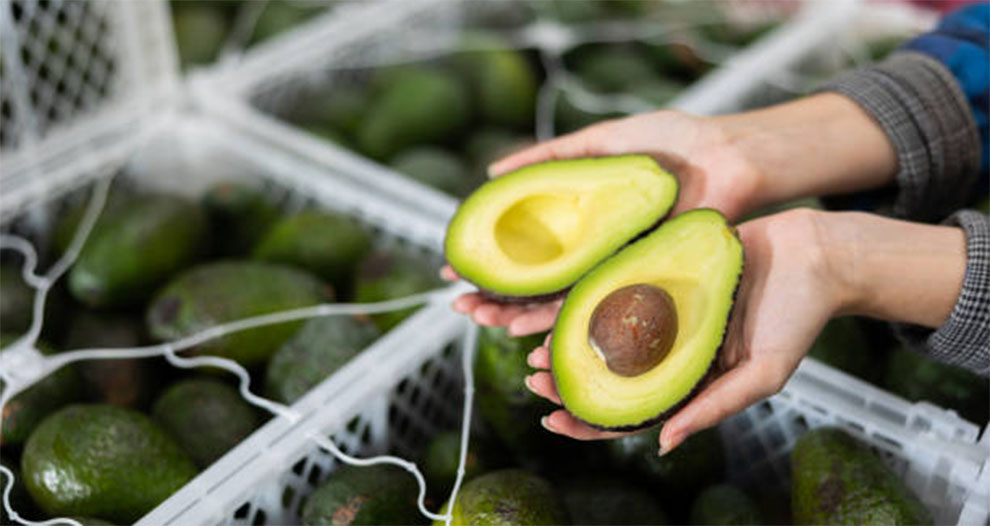
Avocados have a high nutritional value, are rich in healthy fats, potassium, and folate, and have a high Vitamin E, C, and K content. They also contain small degrees of B vitamins and minerals like iron, zinc, copper, magnesium, phosphorous, and manganese.
Avocados contain monosaturated fats that are typically oleic acid. It is beneficial for your heart, combats inflammation, and has anti-cancer properties. Moreover, adding avocados to your diet helps elevate the absorption levels of fat-soluble nutrients.
In addition, all different kinds of avocados have a high fiber content, a nutrient absent from most Western diets. Studies suggest that people who regularly eat avocados weigh less because of their high healthy fat, rich fiber content, and low glycemic index.
What’s more?
Avocados have antioxidants like zeaxanthin and lutein. These are good for your brain and eyes. Avocados also help lower the vulnerability of neurodegenerative diseases like Alzheimer’s and eye-related concerns like cataracts and age-related macular degeneration.
Lastly, people who eat avocados are healthier and have a lower susceptibility to developing metabolic syndrome.
Related: How to grow avocado seed in water? | How long does it take avocado seed to sprout?
Frequently Asked Questions
Ques 1. Which type of avocado is the healthiest?
Ans. Green-skin avocados are the healthiest because of less oil and fat in them. But they may not be as delicious as the other varieties.
Ques 2. What type of avocado is best for guacamole?
Ans. Hass avocado has a creamy texture, making them the best pick for guacamole.
Ques 3. What is the largest avocado variety?
Ans. Avozilla is the largest avocado variety. It is five times bigger than most average avocado varieties. They weigh approximately 1.2 kg.
